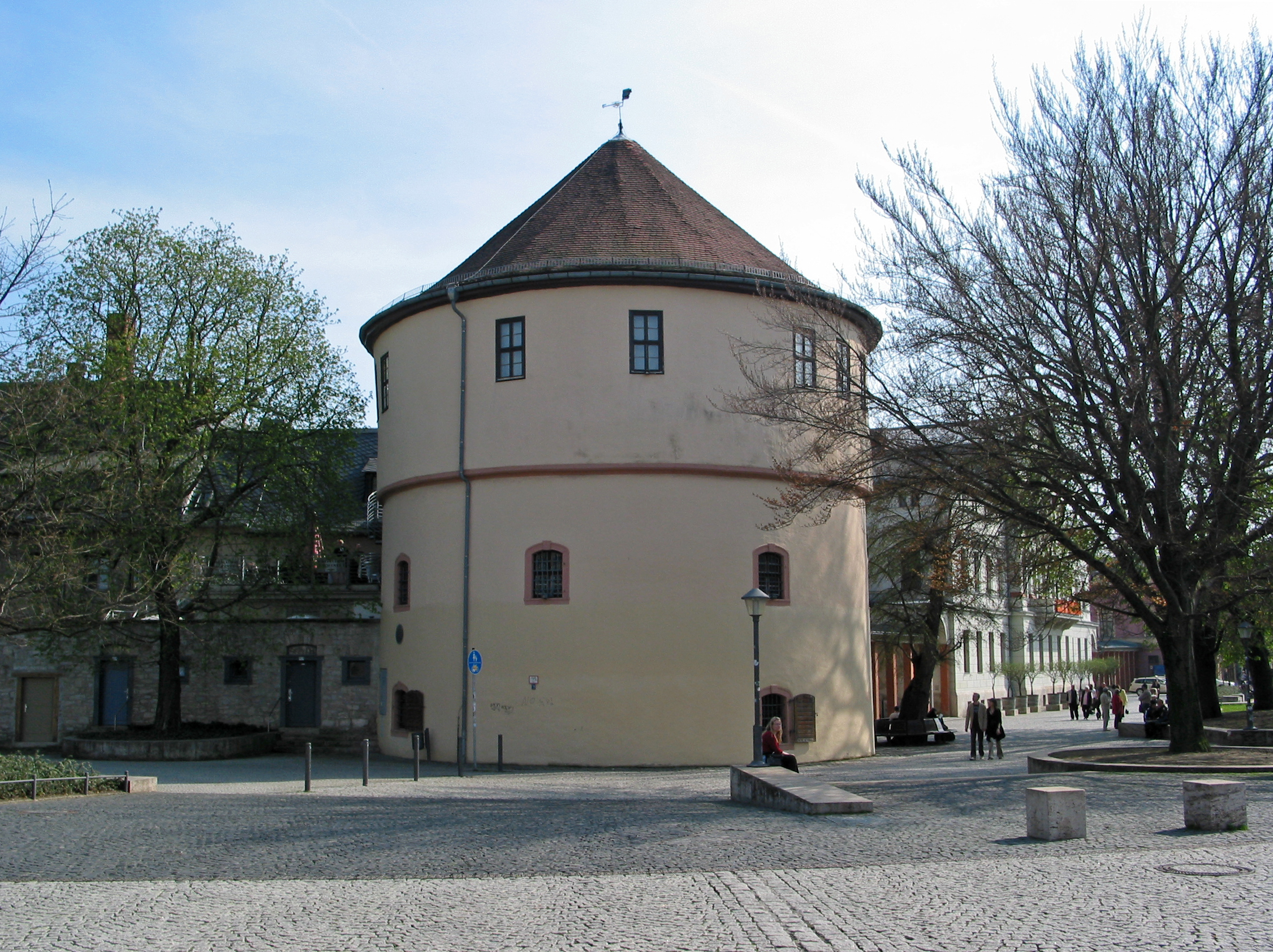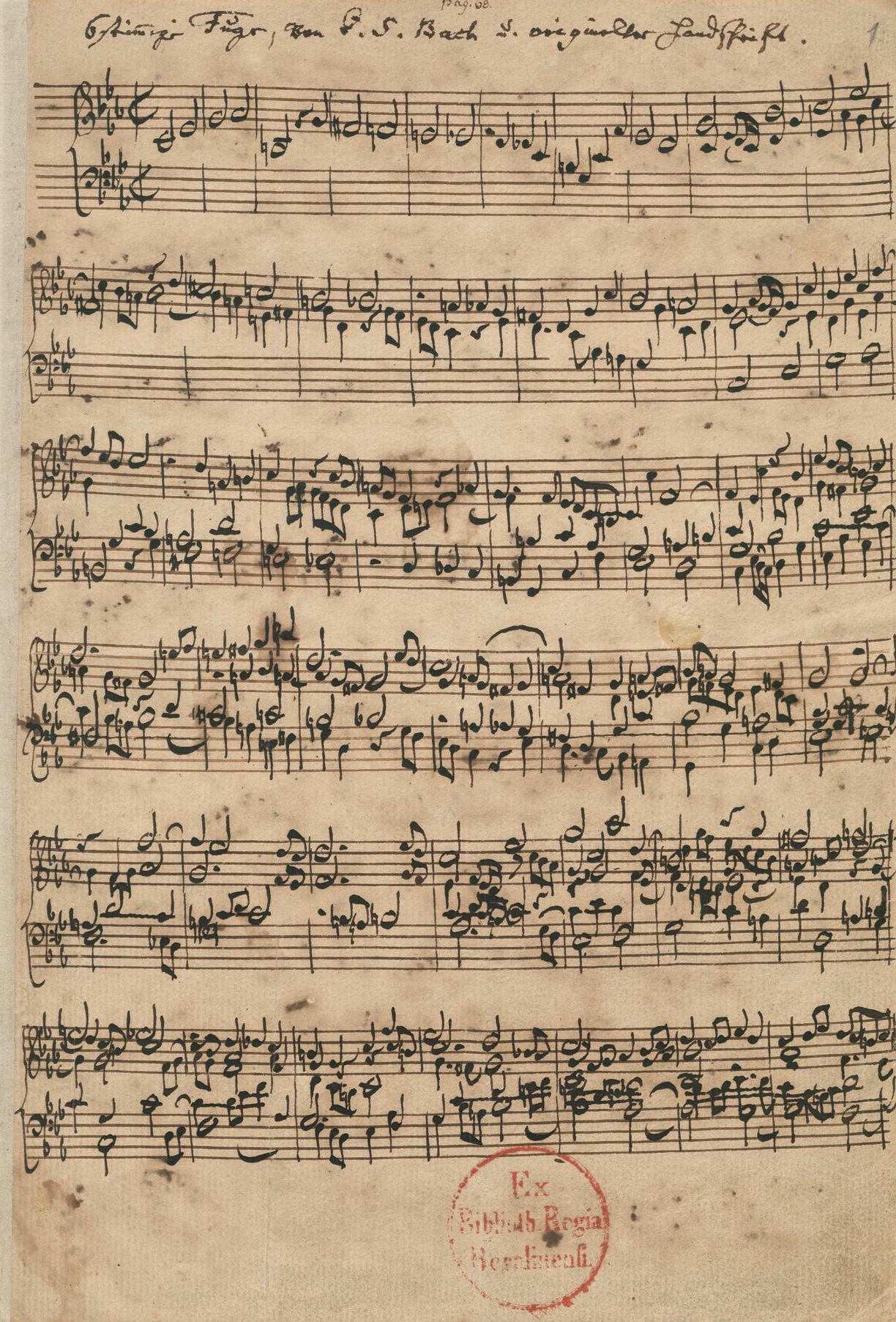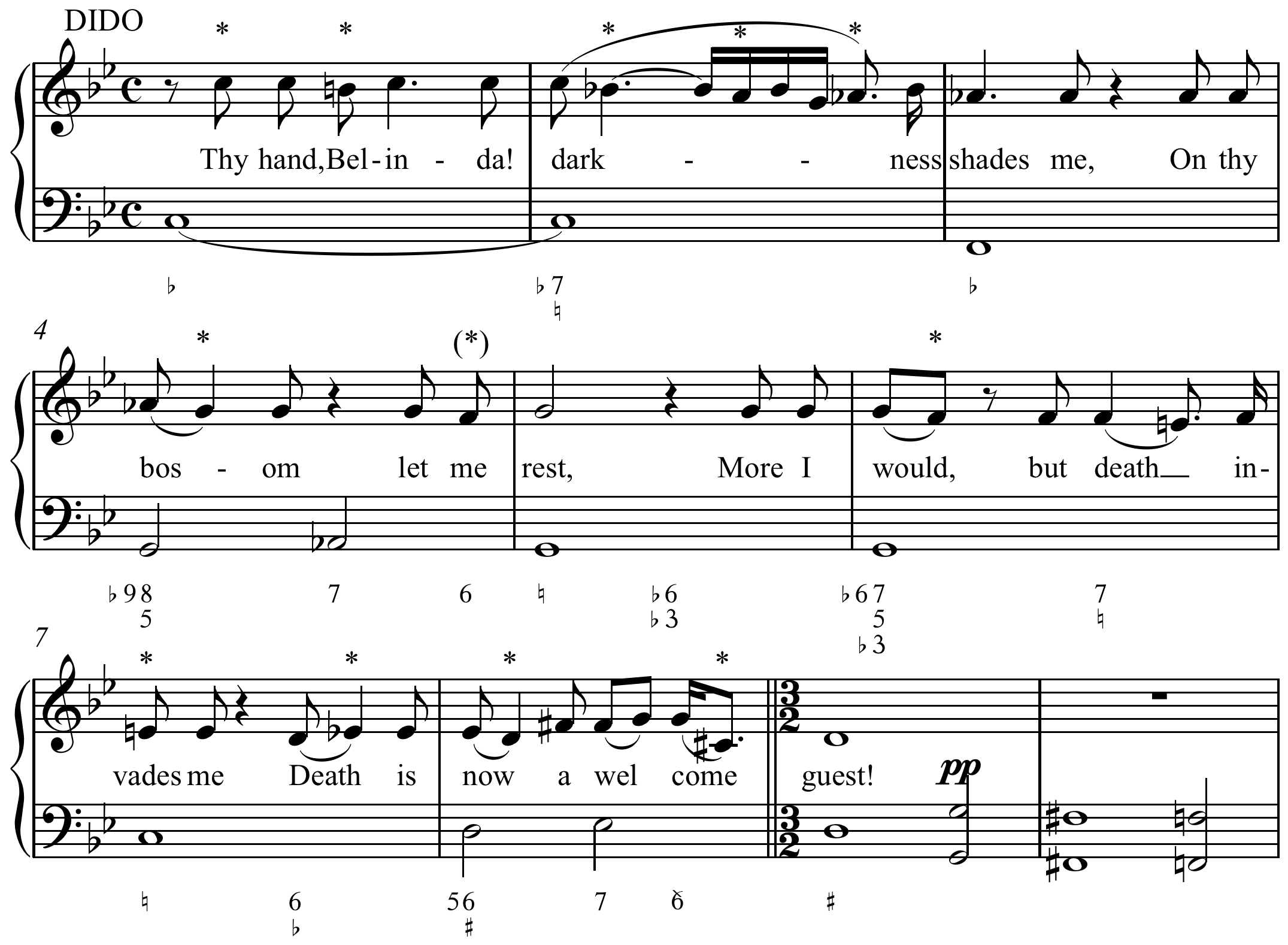|
Johann Peter Kellner
Johann Peter Kellner (variants: Keller, Kelner; 28 September 1705 – 19 April 1772) was a German pipe organ, organist and composer. He was the father of Johann Christoph Kellner. Biography He was born in Gräfenroda, Thuringia, and was intended by his parents to follow his father into a career as a lamp-black merchant. He was devoted to music from childhood, and first learnt singing from the cantor Johann Peter Nagel and keyboard from his son Johann Heinrich Nagel. He studied for a year from 1720 with the organist Johann Schmidt (organist), Johann Schmidt in Anrode, Zella, followed by a year with the organist Hieronymus Florentinus Quehl (or Kehl) in Suhl, during which time he also studied composition. He knew Johann Sebastian Bach well, although it is not known whether he was taught by him. He was also acquainted with George Frideric Handel. In 1722, he returned to work as a tutor at Gräfenroda for three years. He was appointed cantor of Frankenhain in October 1725, returning to ... [...More Info...] [...Related Items...] OR: [Wikipedia] [Google] [Baidu] |
Pipe Organ
The pipe organ is a musical instrument that produces sound by driving pressurised air (called ''wind'') through the organ pipes selected from a Musical keyboard, keyboard. Because each pipe produces a single tone and pitch, the pipes are provided in sets called ''ranks'', each of which has a common timbre, volume, and construction throughout the keyboard Compass (music), compass. Most organs have many ranks of pipes of differing pitch, timbre, and volume that the player can employ singly or in combination through the use of controls called Organ stop, stops. A pipe organ has one or more keyboards (called ''Manual (music), manuals'') played by the hands, and most have a Pedal keyboard, pedal clavier played by the feet; each keyboard controls its own division (group of stops). The keyboard(s), pedalboard, and stops are housed in the organ's Organ console, ''console''. The organ's continuous supply of wind allows it to sustain notes for as long as the corresponding keys are pressed, ... [...More Info...] [...Related Items...] OR: [Wikipedia] [Google] [Baidu] |
Weimar
Weimar is a city in the state (Germany), German state of Thuringia, in Central Germany (cultural area), Central Germany between Erfurt to the west and Jena to the east, southwest of Leipzig, north of Nuremberg and west of Dresden. Together with the neighbouring cities of Erfurt and Jena, it forms the central metropolitan area of Thuringia, with approximately 500,000 inhabitants. The city itself has a population of 65,000. Weimar is well known because of its cultural heritage and importance in German history. The city was a focal point of the German Enlightenment and home of the leading literary figures of Weimar Classicism, Johann Wolfgang von Goethe and Friedrich Schiller. In the 19th century, composers such as Franz Liszt made Weimar a music centre. Later, artists and architects including Henry van de Velde, Wassily Kandinsky, Paul Klee, Lyonel Feininger, and Walter Gropius came to the city and founded the Bauhaus movement, the most important German design school of the int ... [...More Info...] [...Related Items...] OR: [Wikipedia] [Google] [Baidu] |
BWV Anh
The BWV Anh. () is a list of lost, doubtful, and spurious compositions by, or once attributed to, Johann Sebastian Bach. History First edition of the ''Bach-Werke-Verzeichnis'' (1950) In 1950 the ''Bach-Werke-Verzeichnis'' was published, allocating a unique number to every known composition by Bach. Wolfgang Schmieder, the editor of that catalogue, grouped the compositions by genre, largely following the 19th-century (BG) edition for the collation (e.g. BG cantata number = BWV number of the cantata): # List of compositions by Johann Sebastian Bach#BWV Chapter 1, Kantaten (Cantatas), BWV 1–224 # List of compositions by Johann Sebastian Bach#BWV Chapter 2, Motetten (Motets), BWV 225–231 # List of compositions by Johann Sebastian Bach#BWV Chapter 3, Messen, Messensätze, Magnificat (Masses, Mass movements, Magnificat), BWV 232–243 # List of compositions by Johann Sebastian Bach#BWV Chapter 4, Passionen, Oratorien (Passions, Oratorios), BWV 244–249 # List of compositions by ... [...More Info...] [...Related Items...] OR: [Wikipedia] [Google] [Baidu] |
Fugue
In classical music, a fugue (, from Latin ''fuga'', meaning "flight" or "escape""Fugue, ''n''." ''The Concise Oxford English Dictionary'', eleventh edition, revised, ed. Catherine Soanes and Angus Stevenson (Oxford and New York: Oxford University Press, 2006). ) is a Counterpoint, contrapuntal, Polyphony, polyphonic Musical composition, compositional technique in two or more voice (music), voices, built on a Subject (music), subject (a musical theme) that is introduced at the beginning in imitation (music), imitation (repetition at different pitches), which recurs frequently throughout the course of the composition. It is not to be confused with a ''fuguing tune'', which is a style of song popularized by and mostly limited to Music history of the United States, early American (i.e. shape note or "Sacred Harp") music and West gallery music, West Gallery music. A fugue usually has three main sections: an exposition (music), exposition, a development (music), development, and a final ... [...More Info...] [...Related Items...] OR: [Wikipedia] [Google] [Baidu] |
Arnstadt
Arnstadt () is a town in Ilm-Kreis, Thuringia, Germany, on the river Gera (river), Gera about south of Erfurt, the capital of Thuringia. Arnstadt is one of the oldest towns in Thuringia, and has a well-preserved historic centre with a partially preserved town wall. The town is nicknamed ("The Gateway to the Thuringian Forest") because of its location on the northern edge of that forest. Arnstadt has a population of approximately 27,000. Geography The town centre is on the west side of the River Gera. The municipality has absorbed several neighbouring municipalities: Angelhausen–Oberndorf (1922), Siegelbach (1994), Rudisleben (1999) and Wipfratal (2019). The neighbouring municipalities are Amt Wachsenburg, Alkersleben, Dornheim, Bösleben-Wüllersleben, Stadtilm, Ilmenau, Plaue and Geratal. Climate The annual precipitation averages 487 mm. History A deed of gift issued 1 May 704 in Würzburg by the Thuringian Duke Hedan II to the Anglo-Saxon bishop Willibrord of Archdioc ... [...More Info...] [...Related Items...] OR: [Wikipedia] [Google] [Baidu] |
Well-Tempered Clavier
''The Well-Tempered Clavier'', BWV 846–893, consists of two sets of preludes and fugues in all 24 major and minor keys for keyboard by Johann Sebastian Bach. In the composer's time ''clavier'' referred to a variety of keyboard instruments, namely the harpsichord, the clavichord and the organ (which operates using air instead of strings), but not excluding the regal and the then newly-invented fortepiano. The modern German spelling for the collection is ' (WTK; ). Bach gave the title ' to a book of preludes and fugues in all 24 keys, major and minor, dated 1722, composed "for the profit and use of musical youth desirous of learning, and especially for the pastime of those already skilled in this study". Some 20 years later, Bach compiled a second book of the same kind (24 pairs of preludes and fugues), which became known as ''The Well-Tempered Clavier'', Part Two (in German: ''Zweyter Theil'', modern spelling: ''Zweiter Teil''). Modern editions usually refer to both parts ... [...More Info...] [...Related Items...] OR: [Wikipedia] [Google] [Baidu] |
Galante Music
In music, galant refers to the style which was fashionable in the upper-class societies of Western Europe from the 1720s to the 1770s. On the other hand, the term found a narrowing in musicology in the 19th and 20th centuries: the focus is on compositions that can be seen as moving away from the Baroque in its more rhetorical formal language, but which at the same time only display qualities that can be attributed to the pre-classical period to a limited extent. At this point, the galant style can be seen as a step towards the formally freer, sensitive style, '' Empfindsamkeit,'' that prepared the early classical period. Music styles This movement featured a return to simplicity and immediacy of appeal after the complexity of the late Baroque era. This meant simpler, more song-like melodies, decreased use of polyphony, short, periodic phrases, a reduced harmonic vocabulary emphasizing tonic and dominant, and a clear distinction between soloist and accompaniment. C. P. E. Bach a ... [...More Info...] [...Related Items...] OR: [Wikipedia] [Google] [Baidu] |
BWV 1027
The sonatas for viola da gamba and harpsichord, BWV 1027–1029, are three sonatas composed by Johann Sebastian Bach for viola da gamba and harpsichord. They probably date from the late 1730s and early 1740s. Origins Although the dating of Bach's three sonatas for viola da gamba and cembalo has presented problems for musicologists, because only an autograph score of the first sonata BWV 1027 survives, there is now general consensus that the works were written in Leipzig at some time in the late 1730s and early 1740s. Prior to that commentators had suggested that they dated from an earlier period when Bach was in Köthen or even beforehand: the viola da gamba player Christian Ferdinand Abel was one of the court musicians of Prince Leopold at Cöthen. Bach moved to Leipzig as Thomaskantor in 1723 and in 1729 was appointed director of the Collegium Musicum, a chamber music society that put on weekly concerts at the Café Zimmermann. Other versions of BWV 1027 exist: there is a trio ... [...More Info...] [...Related Items...] OR: [Wikipedia] [Google] [Baidu] |
BWV 1039
The Sonata in G major for two flutes and basso continuo, BWV 1039, is a trio sonata by Johann Sebastian Bach. It is a version, for a different instrumentation, of the Gamba Sonata, BWV 1027. The first, second and fourth movement of these sonatas also exist as a trio sonata for organ. Historical context This sonata, scored for two transverse flutes and continuo, is one of the few trio sonatas that can genuinely be attributed to Bach. Although traditionally thought to have been composed during Bach's period in Weimar or Cöthen, Bach scholars have revised that dating based on an analysis of the extant manuscripts and on stylistic considerations. According to , the trio sonata was composed between 1736 and 1741 in Leipzig, where, since 1729, Bach had been director of the Collegium Musicum, a chamber music society performing weekly at the Café Zimmermann. The version for viola da gamba and harpsichord, BWV 1027, as well as the other two sonatas for this ensem ... [...More Info...] [...Related Items...] OR: [Wikipedia] [Google] [Baidu] |
Figured Bass
Figured bass is musical notation in which numerals and symbols appear above or below (or next to) a bass note. The numerals and symbols (often accidental (music), accidentals) indicate interval (music), intervals, chord (music), chords, and non-chord tones that a musician playing piano, harpsichord, organ (music), organ, or lute (or other instruments capable of playing chords) should play in relation to the bass note. Figured bass is closely associated with #Basso continuo, basso continuo: a historically improvised accompaniment used in almost all genres of music in the Baroque music, Baroque period of Classical music ( 1600–1750), though rarely in modern music. Figured bass is also known as thoroughbass. Other systems for Chord (music)#Notation, denoting or representing chords include plain staff notation, used in classical music; Roman numeral analysis, Roman numerals, commonly used in harmonic analysis (music), harmonic analysis; chord letters, sometimes used in modern music ... [...More Info...] [...Related Items...] OR: [Wikipedia] [Google] [Baidu] |
Transverse Flute
A transverse flute or side-blown flute is a flute which is held horizontally when played.Powell, A. (2001). Transverse flute. Grove Music Online. Retrieved 6 Feb. 2024 The player blows across the embouchure hole, in a direction perpendicular to the flute's body length. Transverse flutes include the Western concert flute, the Irish flute, the Indian classical flutes (the bansuri and the venu), the Chinese dizi, the Western fife, a number of Japanese fue, and Korean flutes such as daegeum, junggeum and sogeum. See also *End-blown flute thumb , Notched flute, showing U-shaped notch in the instrument’s rim. The end-blown flute (also called an edge-blown flute or rim-blown flute) is a woodwind instrument played by directing an airstream against the sharp edge of the upper en ... References {{Flute-stub ... [...More Info...] [...Related Items...] OR: [Wikipedia] [Google] [Baidu] |
Trio Sonata
The trio sonata is a genre, typically consisting of several movements, with two melody instruments and basso continuo. It originated in the early 17th century and was a favorite chamber ensemble combination in the Baroque era. Basic structure The trio sonata typically was written for two melody instruments (such as two violins) and basso continuo. However, either or both of the melody parts could be played on the flute, recorder, oboe, or even viola da gamba. The bass part, the continuo, typically involves two players. One player plays the bass line on a bass instrument such as a bass viol, violone, violoncello, or bassoon. The second player fills in harmonies above the bass line, using an instrument that can produce chords, such as a small organ, a harpsichord, or a theorbo. These chords are normally indicated to the player by placing numbers above the bass part rather than writing out the chords in full, a style of notation called figured bass. Because there normally ... [...More Info...] [...Related Items...] OR: [Wikipedia] [Google] [Baidu] |






